mmcartalk
Expert
- Messages
- 4,155
- Reactions
- 2,675
MM Retro Write-Up: The Original Chrysler Minivans
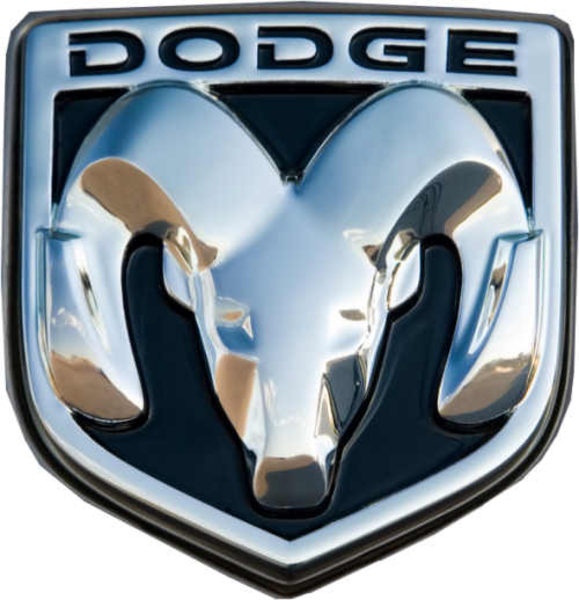
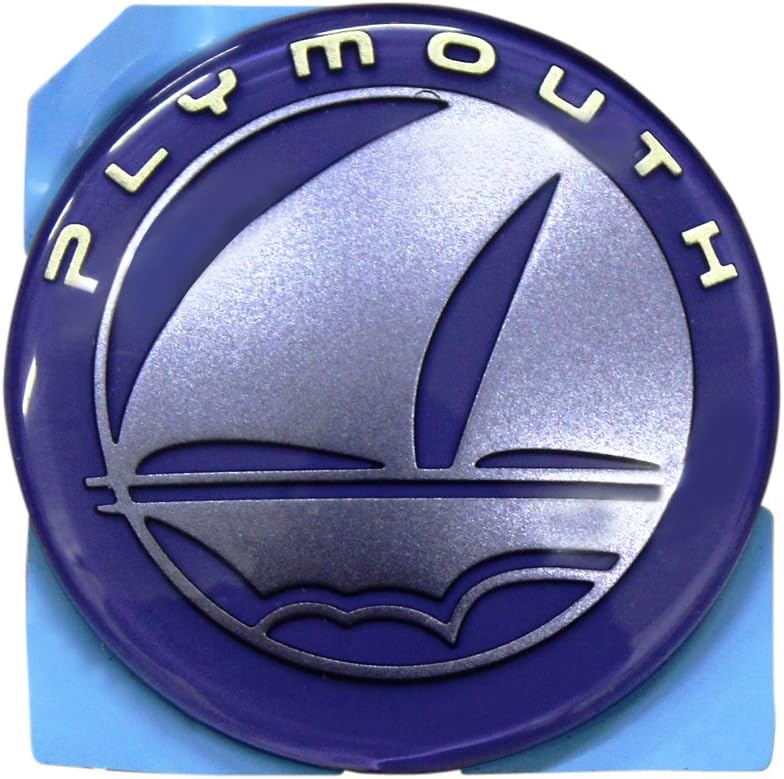
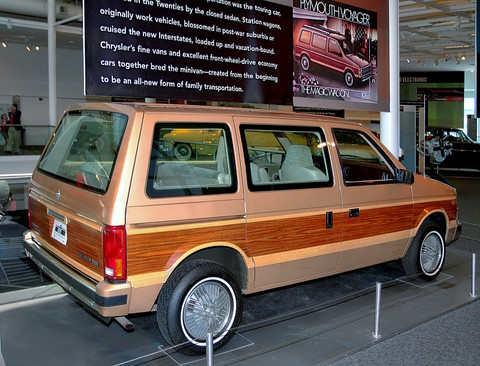
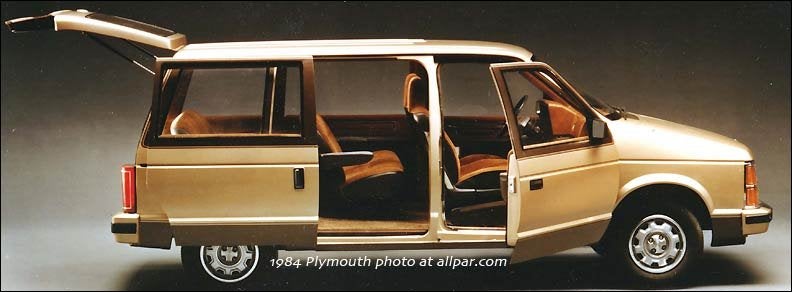
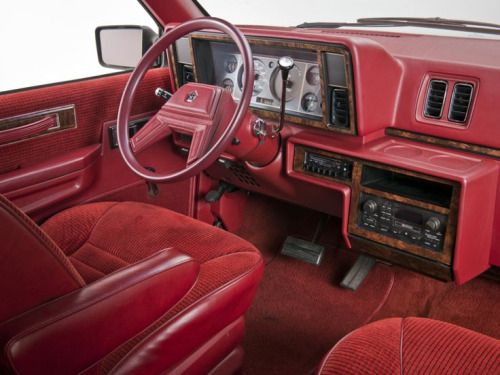

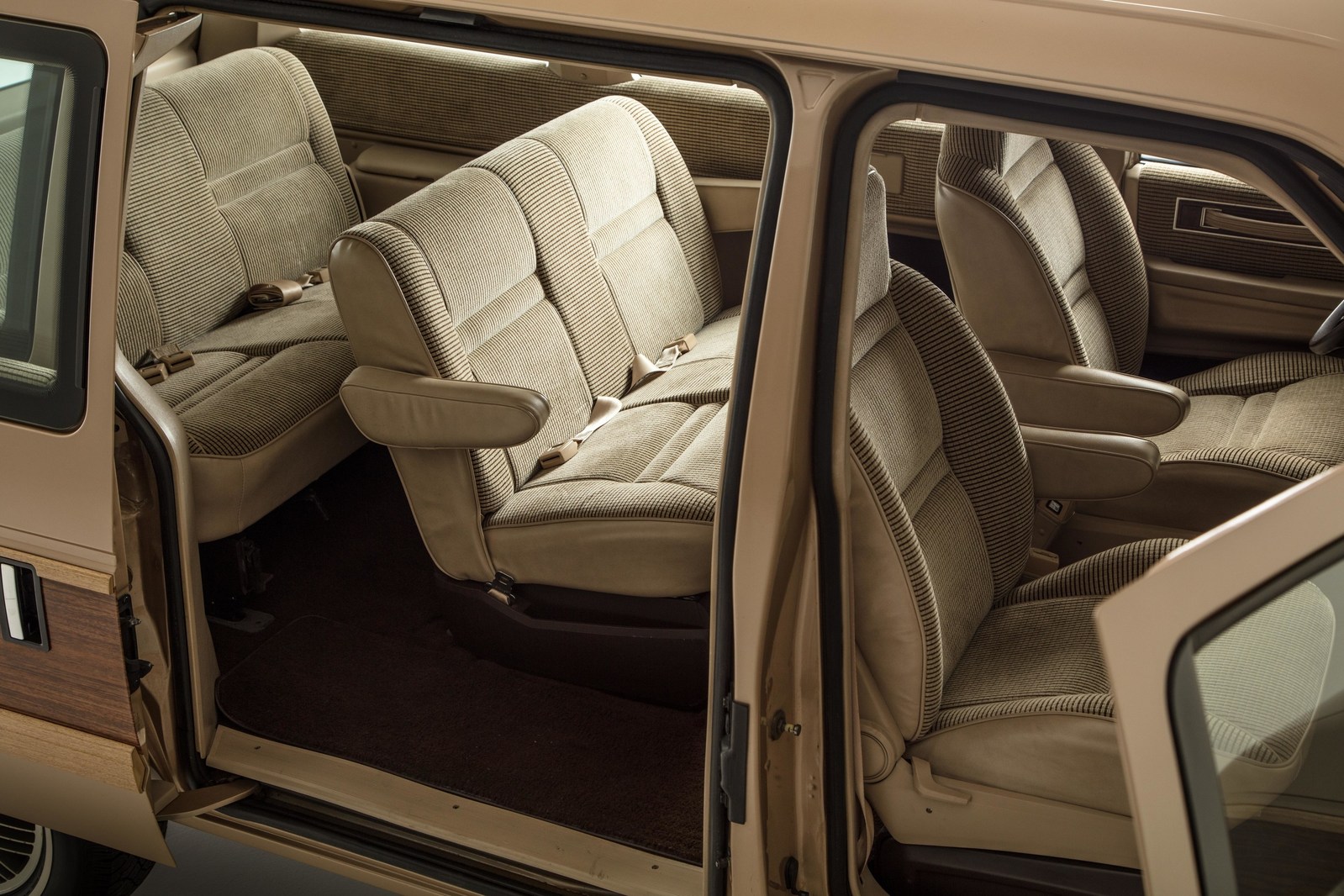
Although the AMC Eagle (which I also wrote about recently) was some 15 years ahead of its time, few other vehicles, in my lifetime, have had the enormous impact on the American auto industry as the original 1984 Dodge and Plymouth Front-Wheel-Drive minivans...the Voyager and Caravan. When I first saw them, and test-drove one, in the fall of 1983, despite the fact that, mechanically, they had the usual Chrysler deficiencies in mechanical and build/assembly, I was very impressed with the concept and general layout, which seemed to make a lot of sense for many families. I had predicted that they would do very well in the marketplace, but, even then, I was amazed at their enormous popularity, and had clearly underestimated it myself.
The Chrysler duo, of course, was not the only smaller/mid-sized van available in the American market. The archaic VW Microbus had been available for decades, but was clearly not suited for American driving conditions. Its small rear-mounted, air-cooled power plant was grossly underpowered for American freeways, made the vehicle unstable tail-heavy and somewhat unstable in handling, made it wander all over the place when crosswinds hit the big slab-sides of the vehicle, leaked exhaust-gas into the heat-defrost system if the system were not 100% perfectly-sealed (tiny gaps tended to develop with age), and was very slow to heat up in the winter for any heat or defrost in the first place. It was clearly unsuited for most American families, although it did find a home with the Hippie Commune-life and Drug-Counterculture of the 1960s.....slab-painted with wild colors/patterns and peace-signs.
None of that, of course, affected the 1984 Chrysler minivans...they were designed for American roads and families from the ground up, although the standard N/A Chrysler-designed 2.2L and Mitsubishi-designed 2.5L four-cylinder powerplants did not have a lot of spunk (a Mitsubishi-designed 3.3L V6 was an option). Of course they didn't need big V8 engines like the full-sized American station wagons they replaced...they had been designed for lighter weight, space-efficiency, and driving/road-manners, although the relatively tall center of gravity and softish suspension did mean a fair amount of body roll. Both 4 and 5-speed manual transmissions were offered, as were 3-speed and (later) 4-speed automatics.....neither automatic was particularly reliable, but the 4-speed Ultradrive was to prove especially unreliable. Early transmission failure was something that was to plague several different minivans for years....not just Chrysler products, at least partly because some manufacturers took the easy / cheap way out, and used somewhat-modified transmissions intended for smaller, lighter sedans/coupes instead of designing new ones for the minivans.
As with the also-wildly-successful Ford Mustang, twenty years earlier in 1964, the basic idea for the Chrysler minivans had come from Executive Lee Iacocca and Engineer Hal Sperlich, when they had been working at Ford. Ford, however, for decades, was run by the notoriously cantankerous, arrogant, pompous, and often-unreasonable Henry Ford II, grandson of the company's original founder (Henry Ford's son Edsel had passed away in 1943, most likely from the daily-pressures of the organization and having to deal with the quirky family-fiefdom). Henry Ford II was known as King Henry for a reason....nobody at Ford could take a p*** in the bathroom without his permission. He regularly hired/fired and transferred his managers and executives from place to place, simply to keep any of them from getting too much power in one department.
Iacocca and Sperlich were not pushovers, though.....what worked with a lot of other executives would not necessarily work with them. They took their plans for a car-based, unibody FWD minivan to Henry, who, not surprisingly, axed it. He was not used to subordinates having the audacity to question his rulings, and, when Iacocca and Sperlich didn't back down and pushed it, he quickly booted Sperlich out of the corporation.....who was quickly recruited by Chrysler, as they recognized his talent. he kept Iacocca on for awhile, but it was becoming obvious that that HQ building just wasn't big enough for the both of them. King Henry transferred Iacocca to a lonely office out in the hinterland, to his permanent rank (at Ford), and Iacocca had finally had enough. He barged into Henry's office, showed him the latest financial reports, told Henry to his face that he didn't know what the f*** he was doing with the company's funds, and, of course, that was that...he was out a job that very afternoon.
Lynn Townsend, who was ready to retire at Chrysler (where things were also going from bad to worse), recognized Iacocca's talent, and talked him into taking over his job. Later, Iacocca said that if he knew just how bad things were at Chrysler, he probably would not have taken the position. I'll skip the big complex part where Iacocca had to engineer the big Federal Chrysler bailout, as that is irrelevant to the minivan itself, except, of course, to help guarantee some of the funds for its development. So, Iacocca and his old friend Sperlich were back together again...this time at Chrysler, without King Henry riding herd over them. Iacocca, as the new Chairman, quickly gave the order to set the plans for the minivan-development into motion (Townsend had previously been aware of the plans, but, apparently, didn't want to order it on his own until Iacocca himself gave the OK).
The minivans themselves, like most of the FWD vehicles then in production or under development, were essentially another development of the Car chassis/platform, using the same basic transverse-engine layout, FWD, unibody structure, McPherson-strut front suspension, and a beam-axle rear suspension. Anticipating the widespread use of these minivans with kids and teen agers, they were the first production vehicles in the American market to have built-in cupholders. The rest, of course, is history, and they essentially drove conventional station wagons (and the VW Microbus) out of the market. Their extreme popularity extended into the 1990s, when more families decided they wanted something more sport-oriented and less stodgy than the average minivan, and SUVs started making inroads into the minivan market.
Needless to say, at first, Ford and GM were caught with their pants completely down (probably serves you right, Henry.....a little Karma coming back to you there). Both of them, in a haphazard response, quick-rushed the Ford Aerostar and Chevy Astro/GMC Safari to market, which, being truck-based /rear-drive with ladder-frame, could haul and tow more than the unibody Chrysler products, but lacked the space-efficiency, refinement, road manners, and driving-comfort. It would be several more years before Ford and GM could introduce FWD minivans of their own....the Ford Windstar and Mercury Villager (the Villager was based on the FWD Nissan Quest, and different from the Ford-designed Windstar). GM's first FWD minivans had plastic bodies and were nicknamed "Dust-Busters" because of their similarity to the shape of portable hand-held vaccum-cleaners of the period. The only consolation that Ford and GM had on their minivans was that, although somewhat more reliable, the first RWD Japanese minivans of the period, from Toyota, Nissan, and Mitsubishi, were even more backward, unstable, and awkward-driving...and a more significant rollover risk. The first Japanese minivans that could significantly compete were the Toyota Previa and Mazda MPV. And, of course, the Dodge/Plymouth minivans weren't just sitting there, waiting for the others to catch up. By then, they were moving on to their own second-generation....and the upscale/luxury-oriented Chrysler Town and Country version was debuting. The Chrysler minivans, later, went on to introduce AWD versions (since discontinued), the handy/convienient Stow-and-Go system for folding the seats under the floor, and the pull-down Child-Safety-Seat which was built-into the rear seat backs, which made it MUCH easier for parents to strap Junior in and out of the vehicle.
And, as Always, Happy-Vehicle-Memories

MM
DRIVING IS BELIEVING









Although the AMC Eagle (which I also wrote about recently) was some 15 years ahead of its time, few other vehicles, in my lifetime, have had the enormous impact on the American auto industry as the original 1984 Dodge and Plymouth Front-Wheel-Drive minivans...the Voyager and Caravan. When I first saw them, and test-drove one, in the fall of 1983, despite the fact that, mechanically, they had the usual Chrysler deficiencies in mechanical and build/assembly, I was very impressed with the concept and general layout, which seemed to make a lot of sense for many families. I had predicted that they would do very well in the marketplace, but, even then, I was amazed at their enormous popularity, and had clearly underestimated it myself.
The Chrysler duo, of course, was not the only smaller/mid-sized van available in the American market. The archaic VW Microbus had been available for decades, but was clearly not suited for American driving conditions. Its small rear-mounted, air-cooled power plant was grossly underpowered for American freeways, made the vehicle unstable tail-heavy and somewhat unstable in handling, made it wander all over the place when crosswinds hit the big slab-sides of the vehicle, leaked exhaust-gas into the heat-defrost system if the system were not 100% perfectly-sealed (tiny gaps tended to develop with age), and was very slow to heat up in the winter for any heat or defrost in the first place. It was clearly unsuited for most American families, although it did find a home with the Hippie Commune-life and Drug-Counterculture of the 1960s.....slab-painted with wild colors/patterns and peace-signs.
None of that, of course, affected the 1984 Chrysler minivans...they were designed for American roads and families from the ground up, although the standard N/A Chrysler-designed 2.2L and Mitsubishi-designed 2.5L four-cylinder powerplants did not have a lot of spunk (a Mitsubishi-designed 3.3L V6 was an option). Of course they didn't need big V8 engines like the full-sized American station wagons they replaced...they had been designed for lighter weight, space-efficiency, and driving/road-manners, although the relatively tall center of gravity and softish suspension did mean a fair amount of body roll. Both 4 and 5-speed manual transmissions were offered, as were 3-speed and (later) 4-speed automatics.....neither automatic was particularly reliable, but the 4-speed Ultradrive was to prove especially unreliable. Early transmission failure was something that was to plague several different minivans for years....not just Chrysler products, at least partly because some manufacturers took the easy / cheap way out, and used somewhat-modified transmissions intended for smaller, lighter sedans/coupes instead of designing new ones for the minivans.
As with the also-wildly-successful Ford Mustang, twenty years earlier in 1964, the basic idea for the Chrysler minivans had come from Executive Lee Iacocca and Engineer Hal Sperlich, when they had been working at Ford. Ford, however, for decades, was run by the notoriously cantankerous, arrogant, pompous, and often-unreasonable Henry Ford II, grandson of the company's original founder (Henry Ford's son Edsel had passed away in 1943, most likely from the daily-pressures of the organization and having to deal with the quirky family-fiefdom). Henry Ford II was known as King Henry for a reason....nobody at Ford could take a p*** in the bathroom without his permission. He regularly hired/fired and transferred his managers and executives from place to place, simply to keep any of them from getting too much power in one department.
Iacocca and Sperlich were not pushovers, though.....what worked with a lot of other executives would not necessarily work with them. They took their plans for a car-based, unibody FWD minivan to Henry, who, not surprisingly, axed it. He was not used to subordinates having the audacity to question his rulings, and, when Iacocca and Sperlich didn't back down and pushed it, he quickly booted Sperlich out of the corporation.....who was quickly recruited by Chrysler, as they recognized his talent. he kept Iacocca on for awhile, but it was becoming obvious that that HQ building just wasn't big enough for the both of them. King Henry transferred Iacocca to a lonely office out in the hinterland, to his permanent rank (at Ford), and Iacocca had finally had enough. He barged into Henry's office, showed him the latest financial reports, told Henry to his face that he didn't know what the f*** he was doing with the company's funds, and, of course, that was that...he was out a job that very afternoon.
Lynn Townsend, who was ready to retire at Chrysler (where things were also going from bad to worse), recognized Iacocca's talent, and talked him into taking over his job. Later, Iacocca said that if he knew just how bad things were at Chrysler, he probably would not have taken the position. I'll skip the big complex part where Iacocca had to engineer the big Federal Chrysler bailout, as that is irrelevant to the minivan itself, except, of course, to help guarantee some of the funds for its development. So, Iacocca and his old friend Sperlich were back together again...this time at Chrysler, without King Henry riding herd over them. Iacocca, as the new Chairman, quickly gave the order to set the plans for the minivan-development into motion (Townsend had previously been aware of the plans, but, apparently, didn't want to order it on his own until Iacocca himself gave the OK).
The minivans themselves, like most of the FWD vehicles then in production or under development, were essentially another development of the Car chassis/platform, using the same basic transverse-engine layout, FWD, unibody structure, McPherson-strut front suspension, and a beam-axle rear suspension. Anticipating the widespread use of these minivans with kids and teen agers, they were the first production vehicles in the American market to have built-in cupholders. The rest, of course, is history, and they essentially drove conventional station wagons (and the VW Microbus) out of the market. Their extreme popularity extended into the 1990s, when more families decided they wanted something more sport-oriented and less stodgy than the average minivan, and SUVs started making inroads into the minivan market.
Needless to say, at first, Ford and GM were caught with their pants completely down (probably serves you right, Henry.....a little Karma coming back to you there). Both of them, in a haphazard response, quick-rushed the Ford Aerostar and Chevy Astro/GMC Safari to market, which, being truck-based /rear-drive with ladder-frame, could haul and tow more than the unibody Chrysler products, but lacked the space-efficiency, refinement, road manners, and driving-comfort. It would be several more years before Ford and GM could introduce FWD minivans of their own....the Ford Windstar and Mercury Villager (the Villager was based on the FWD Nissan Quest, and different from the Ford-designed Windstar). GM's first FWD minivans had plastic bodies and were nicknamed "Dust-Busters" because of their similarity to the shape of portable hand-held vaccum-cleaners of the period. The only consolation that Ford and GM had on their minivans was that, although somewhat more reliable, the first RWD Japanese minivans of the period, from Toyota, Nissan, and Mitsubishi, were even more backward, unstable, and awkward-driving...and a more significant rollover risk. The first Japanese minivans that could significantly compete were the Toyota Previa and Mazda MPV. And, of course, the Dodge/Plymouth minivans weren't just sitting there, waiting for the others to catch up. By then, they were moving on to their own second-generation....and the upscale/luxury-oriented Chrysler Town and Country version was debuting. The Chrysler minivans, later, went on to introduce AWD versions (since discontinued), the handy/convienient Stow-and-Go system for folding the seats under the floor, and the pull-down Child-Safety-Seat which was built-into the rear seat backs, which made it MUCH easier for parents to strap Junior in and out of the vehicle.
And, as Always, Happy-Vehicle-Memories

MM
DRIVING IS BELIEVING

